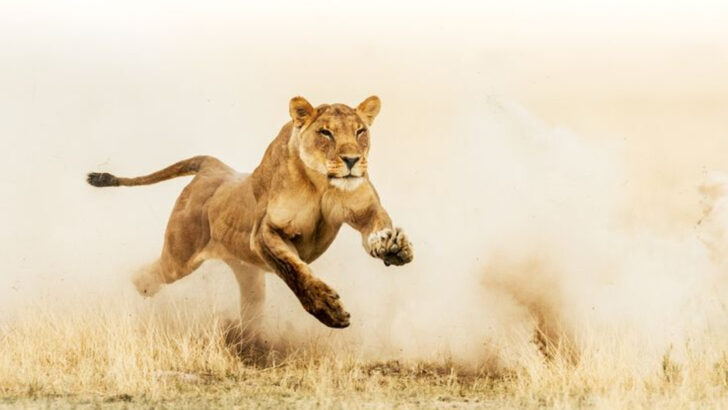A racehorse might seem unbeatable—but in the wild, it wouldn’t stand a chance. Some animals are built for speed in ways that put even the most finely trained horses to shame. We’re talking about bursts of power so explosive, the chase is over before it begins. From four-legged predators to two-legged sprinters, and even some unexpected hoppers, these creatures don’t just run—they fly across land. Their muscles fire like coiled springs, launching them into motion with terrifying precision. Whether it’s for hunting, escaping, or just showing off, these speedsters are nature’s blur on legs. Let’s meet the animals that would leave a racehorse eating dust.
Cheetah
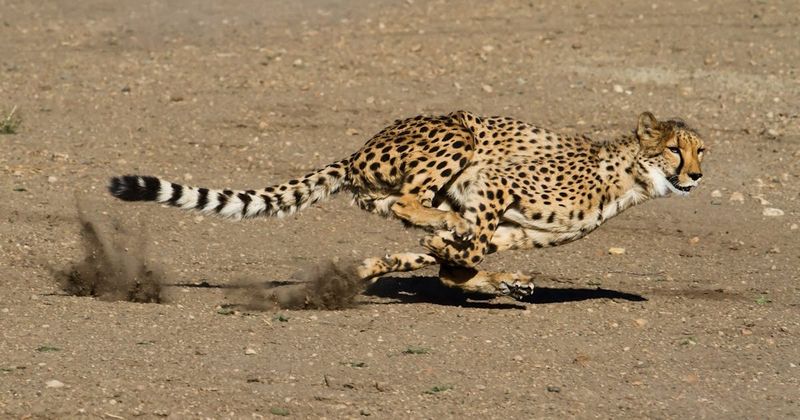
Renowned as the ultimate sprinter in the animal kingdom, the cheetah can reach speeds of up to 75 mph (120 km/h) in short bursts covering distances up to 500 meters. This feline’s incredible acceleration, capable of going from 0 to 60 mph in just a few seconds, is due to its lightweight frame and long, powerful legs. Each stride covers an impressive 20 to 25 feet. Evolution has blessed the cheetah with large nasal passages and lungs, enabling rapid oxygen intake.
Pronghorn Antelope
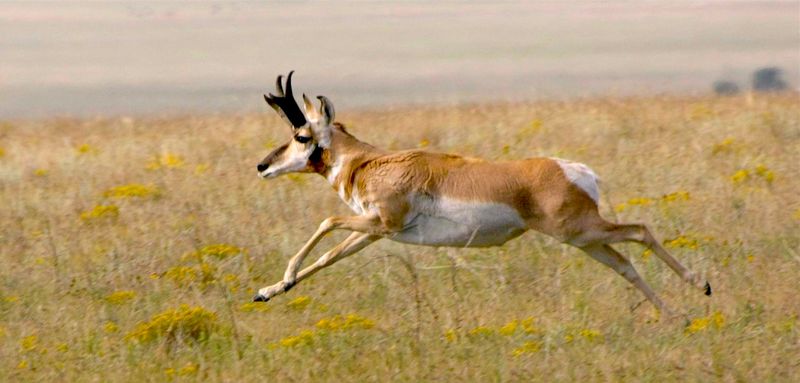
The pronghorn antelope, a native of North America’s vast plains, is celebrated for its remarkable speed, reaching up to 60 mph (97 km/h). Unlike other speedsters, the pronghorn can sustain high speeds over longer distances, making it an endurance champion. Its unique respiratory and cardiovascular systems are finely tuned for efficiency, supporting its long-distance prowess. Pronghorns rely on their speed to evade predators in the open landscape, showcasing nature’s adaptation at its finest.
Springbok
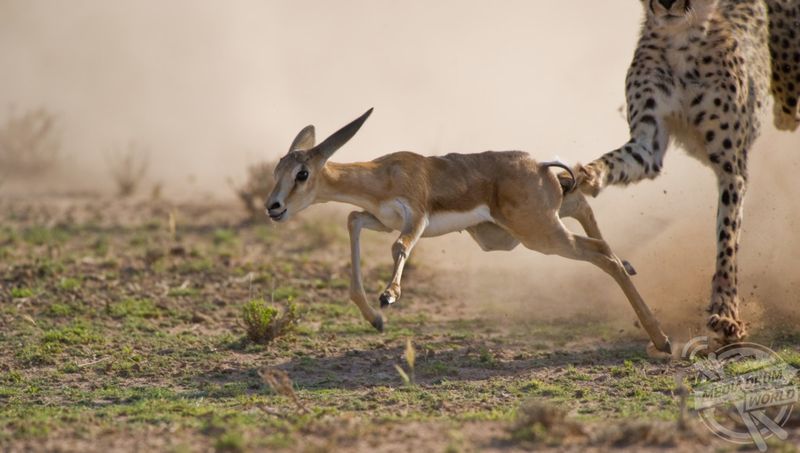
The agile springbok, found in southern Africa, is not only swift but also an expert leaper. Capable of reaching speeds up to 55 mph (89 km/h), this antelope is famous for its ‘pronking,’ a series of high leaps displaying its athleticism. These jumps can reach up to 13 feet in height. This behavior confuses predators and is a visual spectacle of its agility. Springboks travel in herds, moving through the grasslands with coordinated speed and grace.
Lion
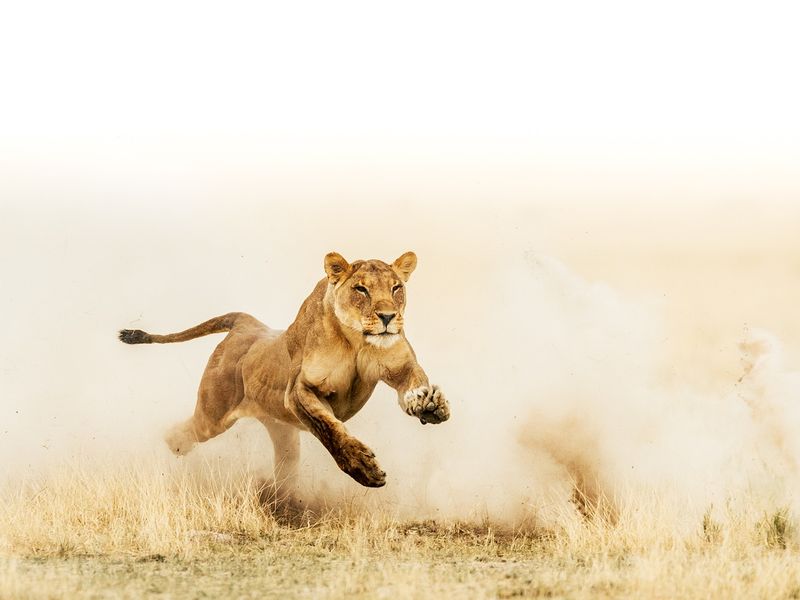
The lion, known as the king of the jungle, commands respect with its impressive speed, reaching up to 50 mph (80 km/h) in short chases. Lions use their speed and strength to ambush prey, relying on a burst of power to close in on unsuspecting animals. Their muscular build and powerful legs are perfectly engineered for these rapid, intense pursuits. While they can’t maintain top speed for long, their strategy and teamwork during hunts make them formidable predators.
Wildebeest
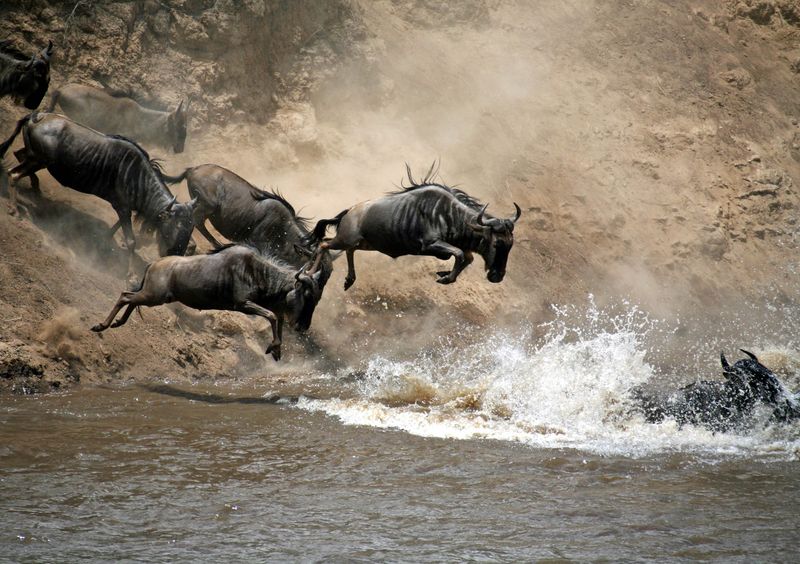
Wildebeests, or gnus, are iconic figures on the African landscape, known for their large-scale migrations. During these migrations, they can reach speeds of 50 mph (80 km/h). This speed is crucial for survival, allowing them to cross vast distances in search of food and water. Their endurance is as notable as their speed, often traveling in herds for protection against predators. The sight of a wildebeest migration is a powerful demonstration of nature’s cycles.
American Quarter Horse
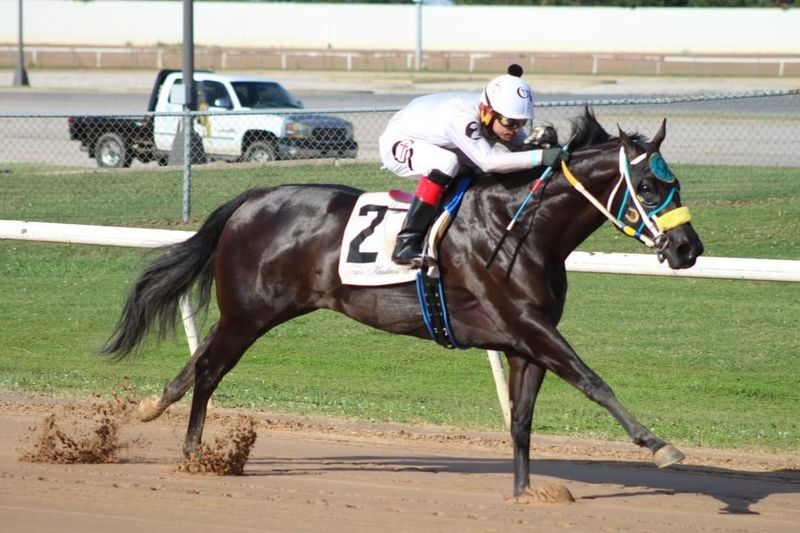
The American Quarter Horse, renowned for its explosive speed in short distances, is a dominant force in ¼-mile races, reaching speeds up to 55 mph (89 km/h). Its name reflects its specialization in quarter-mile sprints. With a powerful build and quick acceleration, these horses excel in rodeos and competitive racing. Their versatility extends beyond the track, making them popular in various equestrian disciplines. The American Quarter Horse stands as a symbol of agility and power.
Ostrich
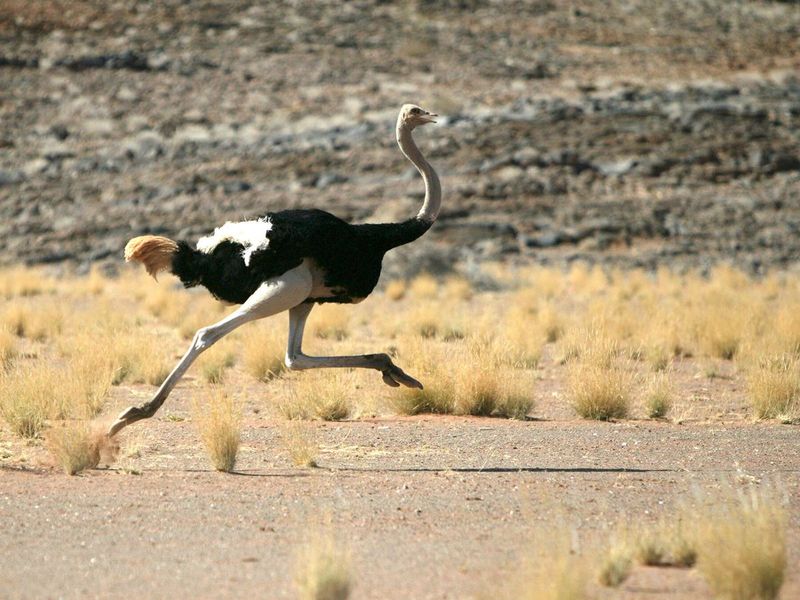
The ostrich, world’s fastest two-legged runner, speeds up to 44 mph (70 km/h). Its long legs provide a stride length of 10 to 16 feet, allowing it to cover ground quickly. Unlike other birds, ostriches can’t fly, but their running prowess is unmatched. They use their speed to escape predators, relying on strong, muscular thighs. In addition to speed, ostriches have excellent vision, allowing them to detect threats from afar. Their incredible speed and agility make them unique among birds.
Greyhound
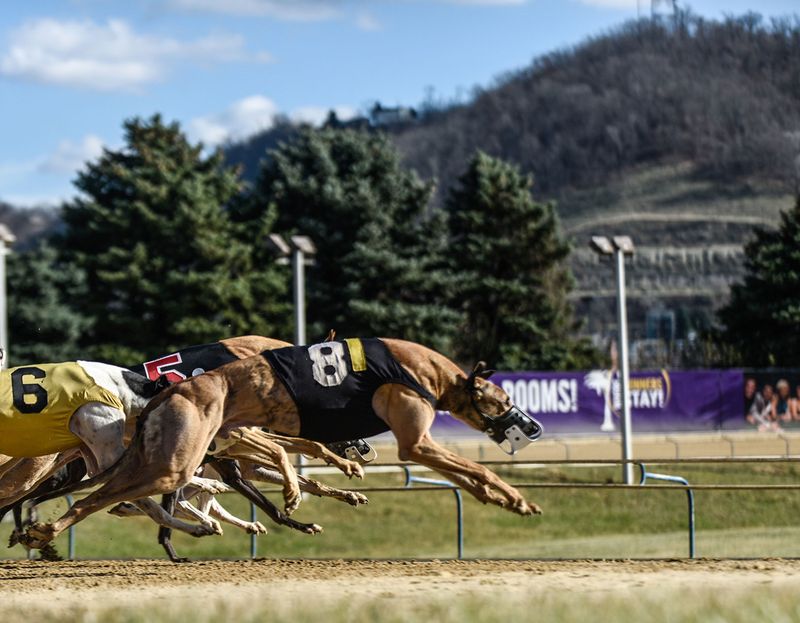
Greyhounds, bred for hunting and racing, are among the fastest dog breeds, reaching speeds of 44 mph (71 km/h). Their lean, aerodynamic build and long legs contribute to their remarkable speed over short distances. Greyhounds are known for their gentle demeanor off the track, but on it, they are focused and driven. Their historical roots trace back to ancient Egypt, where they were revered for their agility and hunting prowess. Speed, grace, and loyalty define the greyhound.
Brown Hare
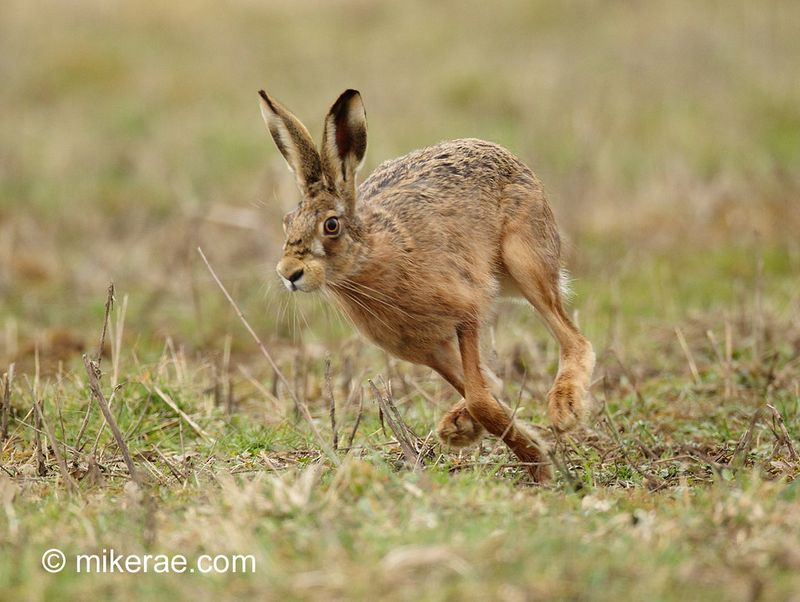
The brown hare is an astonishingly fast runner, capable of reaching speeds up to 45 mph (72 km/h). This speed aids in escaping predators across open fields. Hares have powerful hind legs designed for rapid acceleration and agile maneuvers. Their large eyes provide a wide field of vision, allowing them to spot threats quickly. The brown hare’s ability to zigzag at high speeds is a vital survival mechanism. As symbols of speed and cunning, hares captivate with their swift, elusive nature.
Kangaroo
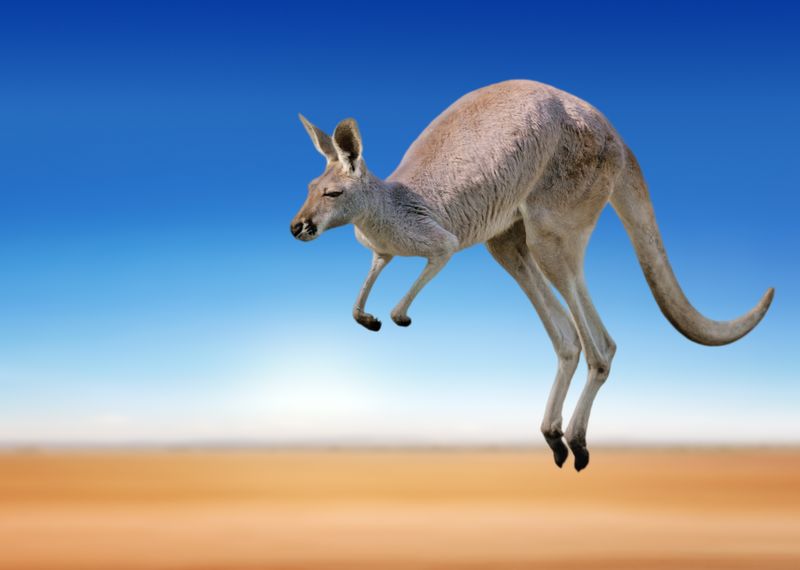
Kangaroos are unique among fast animals due to their hopping locomotion, achieving speeds up to 44 mph (71 km/h) in quick bursts. Their powerful hind legs and large feet create a spring-like mechanism that propels them forward efficiently. This movement conserves energy, allowing kangaroos to travel long distances in search of food and water. Their strong tails aid in balance during high-speed hops. Kangaroos are a symbol of the Australian wilderness, embodying resilience and adaptability.
African Wild Dog
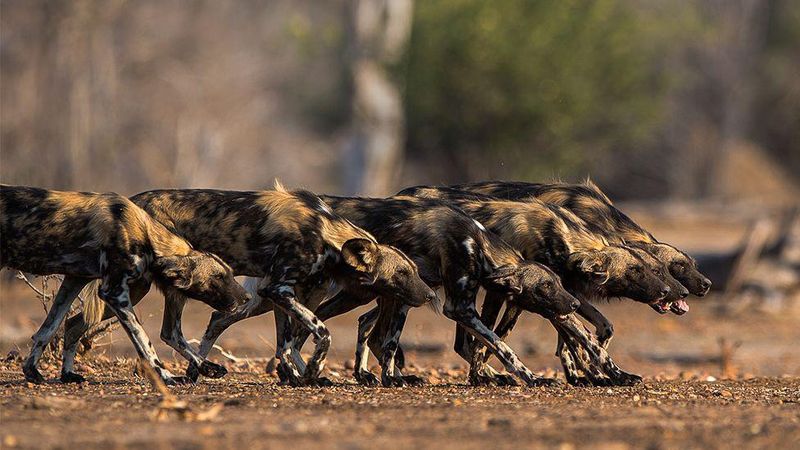
African wild dogs are known for their pack hunting strategies and impressive speed, reaching up to 44 mph (71 km/h). Their endurance allows them to pursue prey over long distances. These canines have a unique social structure, with packs cooperating closely to bring down animals much larger than themselves. Their mottled coats provide camouflage in the dappled light of the savannah. African wild dogs are a testament to the power of teamwork and adaptability in the wild.
Coyote
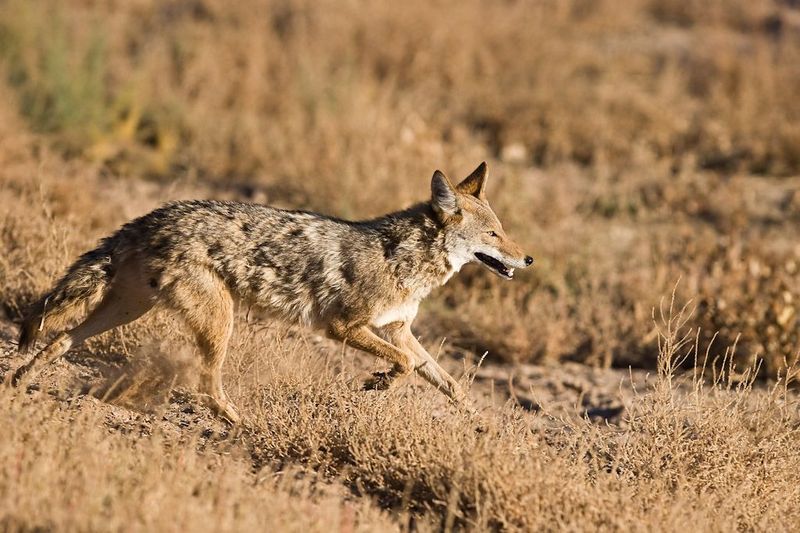
Coyotes are adaptable predators found throughout North America, capable of running at speeds of 43 mph (69 km/h). Their agility and intelligence help them thrive in diverse environments, from deserts to urban areas. Coyotes often hunt alone or in pairs, utilizing their speed to catch small mammals. Despite their speed, they are also known for their cunning and resourcefulness. Coyotes have become symbols of survival and adaptability, thriving amidst ever-changing landscapes.

